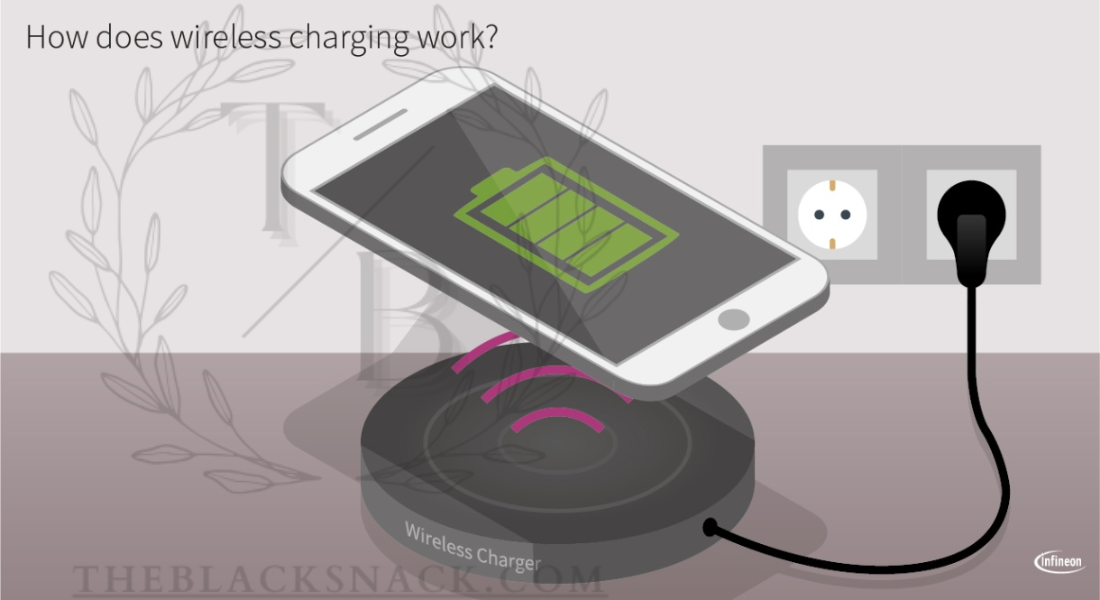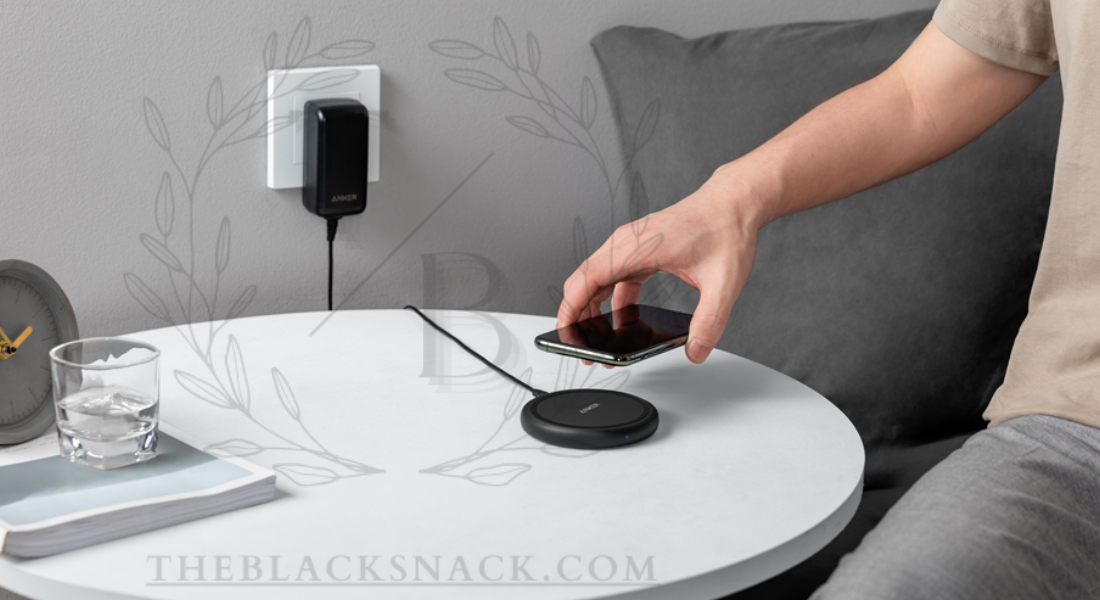In today’s fast-paced world, convenience and efficiency are at the forefront of technological advancements. One of the most significant breakthroughs in this area is wireless charging technology. This innovation has revolutionized how we power devices, eliminating the need for tangled cords and enhancing user experiences. Whether it’s the simplicity of charging a smartphone without plugging in cables or the future potential of electric vehicles charging automatically, wireless charging is changing the way we think about powering our devices. In this article, we will explore how wireless charging technology works, its benefits, current applications, challenges, and the future potential it holds.
1. What is Wireless Charging Technology?
Wireless charging technology enables users to recharge their devices without the need for physical cables or connectors. Instead of using traditional charging cables, this method relies on electromagnetic fields to transfer energy between a charging pad or surface and a compatible device. The underlying principle is based on electromagnetic induction, a process where electrical energy is transferred via magnetic fields. Wireless charging eliminates the need for manual plug-and-play action, streamlining the experience and reducing wear and tear on physical connectors.
Over the years, wireless charging technology has grown in popularity, driven by the demand for more streamlined, user-friendly device charging. It is often used in consumer electronics, including smartphones, smartwatches, and even electric vehicles.
2. How Does Wireless Charging Work?
Wireless charging technology operates through the interaction of three essential components:
- Power Transmitter (Charging Pad): This is the component that generates an alternating electromagnetic field. It acts as the energy source.
- Power Receiver (Device Coil): The receiver in the device picks up the electromagnetic field and converts it back into electrical energy to charge the battery.
- Control System: This system regulates the flow of energy, ensuring that the right amount of power is transferred to the device without overheating or causing damage.
When the device is placed on or near the charging pad, the electromagnetic field induces a current in the receiver coil, which then charges the device. This seamless transfer of power is facilitated by technology standards like the Qi standard, which is the most widely used wireless charging protocol globally.
3. Advantages of Wireless Charging Technology
The benefits of wireless charging technology extend far beyond just the convenience of not needing to plug in cables. Here are some of the key advantages:
Eliminates Cable Clutter:
One of the most obvious benefits of wireless charging is the elimination of messy, tangled cords. With wireless charging, there’s no need for multiple adaptors or cables, which makes your charging stations cleaner and more organized. It’s an especially attractive feature in places where cables tend to pile up, such as desks, nightstands, or public spaces.
Universal Compatibility:
Many wireless chargers support various devices, including smartphones, smartwatches, earbuds, and other portable gadgets. This versatility allows you to charge a variety of devices on the same pad, enhancing convenience. For instance, some wireless charging stations allow you to charge multiple devices simultaneously, which is perfect for households or workplaces with several wireless-enabled devices.
Reduced Wear and Tear:
By removing the need for physical connectors, wireless charging helps reduce the wear and tear on both the device and charging accessories. Charging ports can become damaged or worn out over time, especially with frequent plugging and unplugging, but wireless charging eliminates this problem entirely.
Enhanced Safety Features:
Modern wireless chargers come equipped with various safety mechanisms, such as overheat protection and short circuit prevention. These features help ensure that the device doesn’t overheat while charging and protect both the user and the device from electrical hazards.
Waterproof Devices:
Wireless charging contributes to more streamlined, waterproof device designs. By eliminating charging ports, manufacturers can create truly waterproof devices that can withstand submersion in water, making them more durable and reliable in outdoor or harsh environments.
4. Applications of Wireless Charging Technology
Wireless charging technology isn’t just limited to smartphones and gadgets—it has far-reaching applications across various industries. Here are some prominent examples:
Smartphones and Wearable Devices
Smartphones and wearable devices have been some of the biggest beneficiaries of wireless charging technology. Leading brands like Apple, Samsung, and Google have incorporated wireless charging features in their flagship models, making it a standard feature for many consumers. Additionally, multi-device charging stands are available, allowing you to charge your smartphone, smartwatch, and wireless earbuds simultaneously.
Laptops and Tablets
As technology continues to evolve, wireless charging is slowly making its way into laptops and tablets. Although it’s still in the developmental phase, some manufacturers are experimenting with larger wireless charging stations capable of meeting the power demands of laptops. The future of wireless charging in this sector could revolutionize office environments and workspaces by reducing the number of wires needed for setup.
Electric Vehicles (EVs)
One of the most exciting developments in wireless charging technology is its potential for use in electric vehicles (EVs). Wireless charging pads for EVs are already being developed, allowing drivers to simply park over a designated area to charge their cars. This feature could eventually make public charging infrastructure simpler and more accessible, enabling greater adoption of electric vehicles and contributing to a more sustainable future.
Healthcare Devices
Wireless charging technology is also making an impact in the healthcare industry. Many medical devices, including remote monitoring equipment, surgical tools, and other battery-powered devices, rely on wireless charging for continuous operation. Wireless charging reduces the risk of contamination by eliminating the need for physical connections, making it ideal for use in hospitals and medical settings. Moreover, medical devices are often designed for portability, and wireless charging supports this by reducing the number of external ports.

5. Challenges in Wireless Charging Technology
While wireless charging technology offers numerous benefits, it is not without its challenges. Some of the primary obstacles include:
Charging Speed:
One of the most significant drawbacks of wireless charging is the slower charging speed compared to traditional wired charging. While wired chargers can deliver higher power output, wireless charging speeds are still catching up. However, improvements are being made, and newer wireless chargers offer faster charging speeds than their predecessors.
Compatibility Issues:
Although wireless charging technology is becoming more widespread, not all devices are compatible with all wireless chargers. For example, devices that don’t adhere to widely accepted standards, like Qi, may experience difficulties with wireless charging. As a result, consumers must ensure that their device is compatible with the charging pad they intend to use.
Heat Generation:
One of the challenges associated with wireless charging is heat generation. Excessive heat can negatively affect the battery’s lifespan and overall performance. To address this, newer models of wireless chargers are incorporating better temperature regulation features, such as cooling systems or heat dissipation technology.
6. The Future of Wireless Charging Technology
The future of wireless charging is incredibly promising, with new developments and innovations emerging regularly. Here are some exciting trends to look forward to:
Long-Distance Wireless Charging
One of the most anticipated developments in wireless charging technology is long-distance charging. While current systems require the device to be placed in close proximity to the charging pad, future innovations using resonant inductive coupling or radio-frequency-based charging could allow for charging over a distance. This could mean that your devices automatically start charging as you enter a room or pass by a charging area.
Integration in Public Spaces
In the near future, public spaces like airports, coffee shops, libraries, and even public transportation may be equipped with wireless charging stations. This integration will allow users to charge their devices as they go about their day, eliminating the need for extra cables or the hassle of finding an outlet.
Eco-Friendly Solutions
Wireless charging technology is poised to play a role in creating more sustainable energy solutions. Solar-powered wireless chargers and energy-efficient charging stations will contribute to reducing environmental impact. Smart charging systems that optimize energy use based on current demand are expected to become the norm, reducing energy waste.
Enhanced Efficiency and Safety
Future wireless charging systems are expected to become more efficient, with reduced energy loss during power transmission. As safety features such as temperature control and real-time monitoring improve, users can expect an overall better charging experience, with safer and faster performance.
7. Conclusion
Wireless charging technology has already made a significant impact on how we interact with our devices. From smartphones to electric vehicles, the applications of wireless charging are vast, with potential to revolutionize various industries. As advancements continue to overcome current challenges, including speed, compatibility, and heat generation, the future of wireless charging looks incredibly bright.



